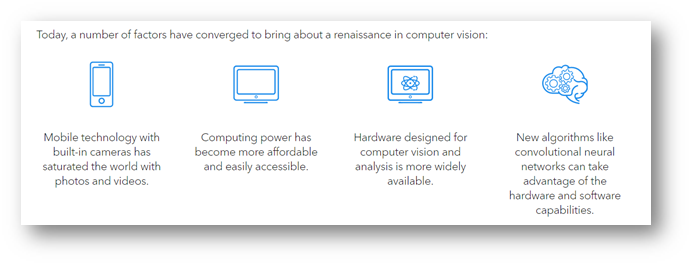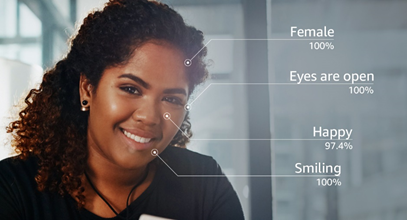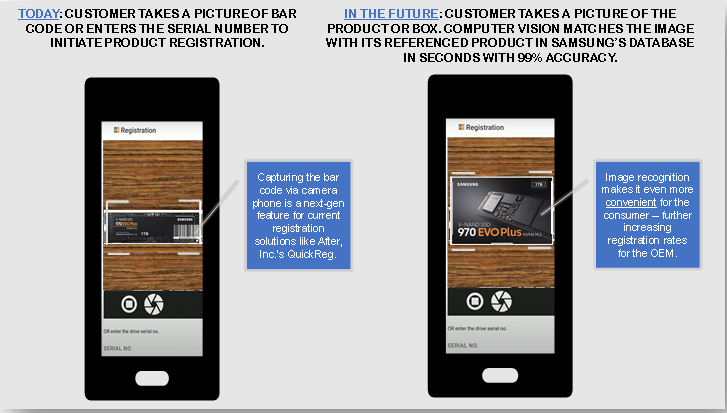Product Registration: Key Technologies Driving the Industry (Two Part Series) Part 2: The Future of Product Registration: What’s Next?
Introduction
This is a two-part series. In Part 1 of this series, we discussed three technological advances – mobile broadband, cloud-based computing and artificial intelligence – that have all contributed to the current paradigm of an automated, personalized, mobile-first product registration. In Part 2 of this series, we will share our perspective on “The Future of Product Registration – What’s Next?” In this article, we highlight two key technologies, each with a number of variations, that have become “mainstream” – biometrics and image recognition. We describe what they are, the various types, and share use cases of how businesses are utilizing these technologies today. We end by providing scenarios on how manufacturers might use them in the future to optimize product registration and drive higher registration rates, better customer communication and stronger customer satisfaction/loyalty.
Biometrics: What is it? What are the various types?
Biometrics covers a variety of technologies in which unique, identifiable attributes are used to identify and authenticate individuals. (Source: Biometrics Institute) Biometric identification is concerned with determining the identity of a person by using their face, their voice or an image of their fingerprint. Biometric authentication is the process of comparing a person’s unique characteristics to that person’s biometric template – which is usually stored in a database or smartcard – in order to verify that they are who they say they are.
There are two segments of biometrics which incorporate the various types of human characteristics – “physiological” and “behavioral” characteristics.
Figure 1 – Types of Biomtrics

Source: Thales Group
Whatever the method, all types of biometrics measurements are:
- Universal – found in all individuals
- Unique – make it possible to differentiate one individual from another
- Permanent – but allow for changes over time
- Recordable – with or without consent
- Measurable – allowing for future comparison
- Forgery-proof – impossible to forge
Physiological measurements offer the benefit of remaining more stable through the life of the individual and are not subject to the effects of stress. Multi-modal biometric systems, which require at least two forms of biometric credentials, have made it possible to reduce error rates considerably.
Biometrics Use Cases – Five Examples
1 . Federal Government Watch Lists
The U.S. Department of Defense manages a biometric system of over 7.4 million identities which started in 2009 with fingerprints and now also contains faces, irises and DNA. The Defense Forensics and Biometrics Agency (DFBA) is tasked with overseeing the database, known officially as the Automated Biometric Information System (ABIS). ABIS allows military branches to flag individuals of interest, putting them on a so-called “Biometrically Enabled Watch List” (BEWL). Once flagged, these individuals can be identified through surveillance systems on battlefields, near borders, on military bases, and in hide-outs around the world. Between 2008 and 2017, the DoD added more than 213,000 individuals to the BEWL and arrested or killed more than 1,700 people based on biometric and forensic matches.
Sources: Thales Group, One Zero
2 . Physical Access Control
Biometrics systems are used on military bases and in commercial buildings to prevent unauthorized individuals from accessing high-risk areas (physical access control). There are numerous use cases for biometric physical access control including: retina scanners for chemical laboratory entry, fingerprint scanners to enter secure data environments, and facial scanners to pilot naval aircraft.
3. Logical Access Control
Most computers and smartphones now come with fingerprint or facial recognition features. The iPhone 5 was the first to introduce fingerprint recognition in 2013 with “Touch ID”, and facial recognition has become mainstream with the iPhone X in November 2017. Today, many Android phones also have this feature, together with iris scanning.
Figure 2 – Facial Recognition Imaging

Source: The Guardian, January 2020
4. Voice Recognition
Voice-activated digital assistants (Amazon Alexa, Microsoft Cortana, Siri) are everywhere now – on our mobile phones, computers, smartwatches, in our cars and in our homes. With improvements in natural language understanding and speech accuracy rates, the technology – backed by tandem improvements in machine learning, big data, cloud processing and AI – has led to a growing appetite for voice-enabled commercial solutions. Finance, HR, and Marketing are three industries that have begun to embrace the technology for things like helping customers manage their online accounts, searching through recruiting databases to find candidates, and sending out mass email responses. Two of the most widely used solutions on the market include:
a. Alexa for Business – users can issue voice commands to begin video conferences, access calendars and print documents.
b. Microsoft Cortana – users can use Cortana to schedule meetings, record meeting minutes and book travel arrangements.
(Source: https://www.globalme.net/blog/new-technology-in-speech-recognition)
5. Retail Facial Recognition Systems
Interestingly, retailers in the UK have turned to facial recognition systems to identify shoplifters. The Guardian claimed in August 2019 that it had become pointless to report shoplifters to the police. The article shared that in 2014, a law was changed making shoplifting of goods below a value of £200 a “summary offence” instead of a misdemeanor. Subsequently, police were directing time and resources away from shoplifting and retailers were no longer reporting it. Instead, retailers started implementing video cameras and facial recognition software to identify former shoplifters upon entry to their stores. The software would immediately send an alert to the store manager who could either “keep a close eye on those individuals” or apprehend them if they struck again.
Image Recognition – or “Computer Vision”: What is it?
Deepai.org defines computer vision as: “the field of study surrounding how computers see and understand digital images and videos, which spans all tasks performed by biological vision systems, including “seeing” or sensing a visual stimulus, understanding what is being seen, and extracting complex information into a form that can be used in other processes using sensors, computers, and machine learning algorithms.”
There are several factors which have converged in the past decade to take computer vision accuracy rates from 50% to 99% and made it more accurate than humans at quickly detecting and reacting to visual inputs (think “automatic brake features” in a late model car that stop the car before the driver can detect a child running out into the street).
Figure 3 – Convergence in Computer Vision

Source: SAS.com/Computer Vision
There are several companies that have developed systems for image and video recognition, the most widely known being Amazon Rekognition. Amazon’s “Rekognition Image” is a deep learning powered image recognition service that detects objects (e.g. vehicles, pets and furniture), scenes (e.g. sunset or beach), and faces (based on a reference index of faces that the user provides); extracts text (e.g. text on a t-shirt, mug or road sign, or a caption or news); recognizes celebrities (for marketing or media needs); and identifies appropriate content in images (e.g. flag inappropriate content, such as nudity, graphic violence or weapons and create rules for a specific application). The service returns a confidence score for everything it identifies so the user can make informed decisions about how to use the results.
Amazon Rekognition Video is a video analysis service that detects activities; understands the movement of people in frame; recognizes people, objects and celebrities, and any inappropriate content stored in the customer’s indexed database. It can also monitor a live stream to detect and recognize faces and analyze facial attributes such as whether the face is smiling, eyes are open and emotions.
Figure 4 – Amazon Rekognition Video

Source: Amazon Rekognition
Image Recognition Use Cases – Five Examples
1. Social Media Photo Tagging
Facebook and Instagram are social media platforms that use image recognition to “tag” people in a member’s network when they appear in uploaded photos. The tagging feature is an automated value-add whereby users just click the photo to verify or update the results – and the platform, similar to all machine learning systems, gets more and more accurate with every use.
Image and Video Online Licensing –Shutterstock is a leading global provider of high-quality licensed images, videos, and music. It is a two-sided marketplace where content creators contribute their work to Shutterstock, and end users buy and use them in a variety of creative personal and business projects. Users can do text-based searches, for example “artificial intelligence”, and Shutterstock returns images that are tagged with those keywords. Most services like Amazon Rekognition offer automated tagging and confidence percent levels (e.g. 97%), making it easy and quick to implement the solution.
2. Online Retail / Retail Mobile Apps
ASOS, Farfetch, Target, Wayfair and Macy’s, to name just a few giant retailers, have visual search capabilities built into their e-commerce websites and mobile apps. Using image-based search, a user can snap an image with his/her camera and upload it to the retail mobile application or website. Machine learning and computer vision technology in the background scrutinize the product/image inventory, analyzing shapes, colors, and patterns, and returns results that are visually similar to the reference image. Visual search is very helpful in scenarios where the user doesn’t know how to describe the item but has a visual reference. Not only does it help with conversions, but it enables retailers to offer product recommendations based on similar or complementary items, as well as alternatives to products that are out of stock.
3. NFL Media
The NFL implements Amazon’s Rekognition solutions to search through thousands of media assets to locate specific elements they are looking for. Using Custom Labels, they can automatically generate metadata tags tailored to specific use cases and provide searchable facets for its content creation teams. For example, suppose Monday Night Football is doing a piece on Tom Brady (former quarterback for the New England Patriots, now a Tampa Bay Buccaneer), and the media analyst needs to find video clips of his touchdowns the previous year. Using Amazon Rekognition, he would conduct a search using keywords like “Tom Brady, touchdowns, 2019” and it would return video clips of those interceptions that he could mash together into a “Tom Brady Touchdown Reel”.
4. Law Enforcement / Sex Trafficking
Marinus Analytics uses Amazon Rekognition for its flagship software, Traffic Jam. Traffic Jam is a suite of tools that allow law enforcement agencies to find missing children who may be victims of sex trafficking. Officers – who used to manually look through thousands of images, making it nearly impossible to find them – can now sift through millions of online records in seconds, flag possible matches and speed up rescue operations.
How Future Product Registration Solutions Might Incorporate These Technologies
While we cannot predict exactly what future registration solutions will look like, we can say with confidence that they will likely include both biometrics and computer vision in the future. Why do we say that? Simply put, the benefits are too great. The two biggest benefits are:
- Biometrics provide stronger security and login verification. Application providers (e.g. Google, Microsoft and Amazon) are now incorporating two-factor authentication into the login process. Google for example requires both facial recognition or password, as well as a verification code sent to another device, before logging into its Services – to protect customer data. In our Product Registration article from April 2019 (click here to view it), we shared an Acxiom study showing that consumers have become more open to providing their personal data to companies if a) they believe they will receive value in return, b) if they can control what is stored, and c) if they believe it will be safe. Incorporating facial recognition, together with a PIN or another form of biometrics, will likely become the industry standard for all mobile applications.
- Computer Vision improves the customer experience and drives higher registration rates. While current mobile registration solutions make it easy for consumers to register their products, computer vision would make it easier and more convenient. By allowing customers to simply snap pictures of their products or product boxes – no bar code or serial number required – they’d be more likely to follow through. Below is a hypothetical example, comparing the current registration process we use with QuickRegTM (one of the most advanced registration solutions in the industry) to how quick and easy it might be using computer vision technology.
Figure 5 – Example of Image Processing in Registration

Source: After, Inc.
As Amazon states on their Rekognition product page: “In photos and videos, text appears very differently than neat words on a printed page. Amazon Rekognition can read skewed and distorted text to capture information like store names, street signs, and text on product packaging.”
Conclusion
The future of product registration may be closer than we think. With fingerprint and facial recognition identification/verification and image and video identification services already being used across industries today, it may just be a matter of time.
To learn more about QuickReg™, our smart registration solution, please visit http://afterinc.com/home/quickreg-smart-product-registration/.
After, Inc. is a pioneer in the warranty business – providing product registration, marketing, analytics, and program administration to warranty organizations across a wide range of industries. Founded in 2005, After has over 15 years of experience delivering innovative warranty offerings to manufacturing clients. After, Inc. partners with some of the world’s top brands to help transform their warranty businesses, driving customer satisfaction post-purchase, higher product reliability, deeper brand equity and additional revenue/profit opportunities. Headquartered in Norwalk, Connecticut, After, Inc. is part of the EPIC Insurance Group, an innovative retail property and casualty and employee benefits insurance brokerage and consulting firm with 2,800 employees across the United States.





